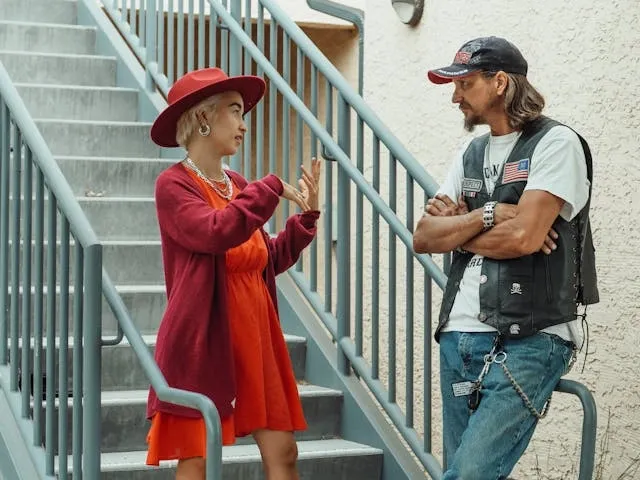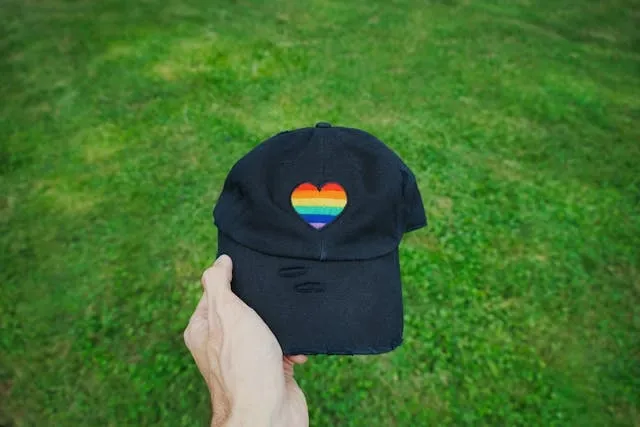How To Iron A Patch Onto A Hat (Step-By-Step Process, And Tips to Avoid Wrinkles)
Ironing a patch onto a hat is simple and effective for personalizing your headwear or repairing a damaged area. Whether you’re adding a custom design or refreshing an old hat, the key lies in careful preparation and proper application. In this guide, we walk you through the step-by-step process of how to iron a patch onto a hat with tips for long-lasting results.
Read on to get the best possible results, regardless of your hat’s material.

Key Takeaways
- Ironing a patch onto a hat requires event pressure and the appropriate heat setting, and it’s important to prepare the hat and patch beforehand.
- A pressing cloth can be helpful to protect the hat fabric from direct heat damage, and you may want to iron the reverse side of the hat after application to increase durability.
- Iron-on patches can last for a long time, adding a stylish, durable upgrade to your hat, but you may be able to choose alternatives like sewing or fabric glue.
- We supply high-quality iron-on patches for hats that can be personalized with your design to add any embellishment to any type of hat.
Table of contents
-
How To Iron A Patch Onto A Hat
-
What Materials Do You Need To Iron A Patch Onto A Hat?
-
How To Apply Heat And Pressure In The Hat For Best Results?
-
Should You Iron The Reverse Side Of The Hat After Applying The Patch?
-
How Long Do Iron-On Patches Last On Hats?
-
Can You Iron A Patch Onto Special Hat Materials Like Crochet?
-
What Is The Best Temperature And Time To Iron On Patches To A Hat?
-
Why Aren’t My Iron-On Patches Sticking To My Hat?
-
What Are The Best Alternative Methods To Attach A Patch To A Hat Without Ironing?
-
How Do You Care For A Hat After Ironing On A Patch?
How To Iron A Patch Onto A Hat
To iron a patch on a hat, you need to follow the correct process. Here’s how to put a patch on a hat using an iron:
- Position the patch on the desired area of the hat. Ensure it is flat and there are no wrinkles.
- Preheat the iron to the appropriate setting for the material of the hat - usually a medium heat.
- Place a pressing cloth or parchment paper over the patch to protect both it and the hat from direct heat.
- Press the iron firmly over the patch, applying even pressure for about 15-20 seconds without moving it. This way, the adhesive should melt evenly and secure to the fabric.
- Repeat the process if necessary but avoid overheating, as this can damage the hat and the patch.
- Allow the patch to cool completely before handling or wearing the hat to ensure the adhesive has set.

What Materials Do You Need To Iron A Patch Onto A Hat?
There are several key materials you will need to iron a patch onto a hat. Let’s look at the things you cannot do without to get the process right:
- The patch: You can order custom iron-on patches for hats from us, crafted with your unique design, to add the desired aesthetic to your hat.
- A clean hat: Naturally, you need a hat that is washed and dry, ready for applying the patch.
- A household iron: This is essential for applying heat and pressure.
- A pressing cloth: This should be a thin piece of cotton or linen to protect the hat, avoiding scorching or potential damage.
A flat, heat-resistant surface, such as an ironing board, is helpful to achieve even pressure. With all these materials, you will be able to adhere your patch securely without damaging the fabric. Gather them efficiently, making sure to check that the fabric of the hat and patch are suitable for withstanding the heat of the iron.
How To Prepare The Hat And The Patch Before Ironing?
Proper preparation is an essential step to successfully iron on a patch to a hat. Whether you have a baseball cap, beanie, bucket hat, or anything else, take the time to prepare before you start the application process.
Start by making sure the hat is clean, and clear it of things like:
- Dust
- Lint
- Wrinkles
Lay the hat on a smooth, flat surface, ensuring the area where you will apply the patch is stable. Next, position the patch on the hat exactly where you want it to go. The pat should lie completely flat with no folds or uneven edges. Pins might be helpful to temporarily anchor it in place.
Before you apply the heat, put a pressing cloth on top of the patch to protect it, and the hat, from direct exposure to the iron’s heat. These preparatory steps help avoid wrinkles and ensure a smooth adhesion with the patch for a professional-looking result.
Want to make a statement with your team's apparel?
Enhance your uniforms with our custom patches!
Order now and create unique uniforms with our high-quality, personalized patches.
How To Apply Heat And Pressure In The Hat For Best Results?
As you are learning how to iron on patches, you need to understand that optimal results can only be achieved by applying firm, even pressure when you hold the hot iron in place. Here’s how you can get this step right as you iron on patches to hats:
- Once the patch is positioned and covered with the pressing cloth, press the iron over the patch without sliding it around.
- Hold the iron still for 15-20 seconds with consistent pressure.
- The amount of heat and pressure you need will depend on the material of your hat. Cotton and wool can withstand a higher heat, but synthetic fabrics typically require lower settings.
- Be sure to apply enough pressure to activate the adhesive on the patch, but take care to avoid overheating as this could damage your hat.
Once you have done the first press, allow it to cool and check the patch. If necessary, repeat the process until you achieve a secure bond.
Should You Iron The Reverse Side Of The Hat After Applying The Patch?
It can be helpful to iron the reverse side of the hat after applying the patch to achieve a more secure adhesion. After applying the patch, carefully flip the hat inside out and gently iron the rear side of the patched area to help strengthen the adhesive bond deeper into the fabric.
When you do this, use a pressing cloth again to protect the fabric from direct heat, and apply the iron for around 10-15 seconds. This technique helps achieve long-term adhesion, particularly for thicker fabrics or patches that have a more substantial backing.
Ironing patches onto hats is mostly done with baseball caps, which the Wardrobe Consultant describes as an easy and versatile choice in its hat styling guide. If you wear your hat frequently, ironing the reverse side of the patch will help keep it securely in place even after repeated use. Use this step to reinforce the bond and enjoy a longer lifespan for your patch.

Stand out from the crowd with our unique designs
Customize your style with our patches!
Order now and make a statement
make your custom patchesHow Long Do Iron-On Patches Last On Hats?
Iron-on patches can bond to hats for a long time, particularly if you carry out the application process correctly. Factors that can have an impact on the durability of the bond include:
- The hat material
- The patch quality
- Your method of application
For example, cotton and wool hats tend to bond with patches better than synthetic materials, which might require additional care. If your patch is properly positioned, the correct heat setting is used, and even pressure is applied throughout, you could enjoy the patch on your hat for years.
Regular wear and washing can also impact a patch’s longevity, so hand washing and air-drying are important to preserve it. We supply high-quality custom iron-on patches that offer diverse design options and long-lasting adhesion to upgrade your hat and offer peace of mind. Work with us and enjoy high-quality craftsmanship, competitive pricing, and fast turnaround times even on larger orders.
Can You Iron A Patch Onto Special Hat Materials Like Crochet?
Ironing a patch onto crochet or other special materials can be challenging because they have such an open weave and may be delicate. Crochet hats, in particular, have significant gaps in the fabric, which may be an obstacle to achieving a strong bond with an iron-on adhesive patch.
In such cases, we recommend using an alternative method like sewing the patch on. Some careful hand-stitching around the edges will ensure you get a durable bond without damaging the crochet fabric. This is very important to get the desired result from your new hat.
For any delicate hat materials that aren’t suitable for heat exposure, like silk or some synthetic fibers, another good option is fabric glue. With alternatives like these, you get the necessary protection for the material but still achieve a strong attachment for the patch. Always check the hat material’s heat tolerance before deciding to iron a patch on.
How To Iron On A Patch To Leather Hats Without Damaging Them?
There are some special precautions to take when considering how to iron on patches to leather. If you are working with a leather hat, here are some tips to achieve the right result without damaging the hat:
- Temperature: Set the iron to a low heat setting, or the ‘leather’ option if available.
- Protection: Once you have place the patch where you want it to go, cover with a pressing cloth to shield the leather from direct heat.
- Application: Instead of applying firm pressure, press the iron gently for about 10-15 seconds as this is less likely to cause scorching or warping from overheating.
- Alternative methods: Consider using fabric glue designed for leather instead of applying heat as this is safer for bonding patches to leather.
Whether you opt for ironing or gluing, we recommend testing on a small, inconspicuous area of the leather first. This will help you avoid any permanent damage.
Add a personal touch with our custom patches
Express yourself with our wide range of designs
Order now and make it yours.
What Is The Best Temperature And Time To Iron On Patches To A Hat?
The best temperature to iron on patches depends on the material of the hat. This is because different fabrics have different heat tolerances, but you do need to apply sufficient heat to activate the adhesive. Here are some rough guidelines:
- Cotton and wool: For these hats, a medium to high heat setting works best. Choose a temperature of around 350°F (175°C) and apply pressure with the iron for 15-20 seconds.
- Synthetic fabrics: This could be polyester or acrylic, and requires a lower heat setting of around 275°F (135°C) to avoid melting or scorching the material.
Always use a pressing cloth to shield the fabric from direct content with the iron. Pressure should be applied firmly and evenly, for the correct amount of time, to allow the patch to adhere to the fabric securely without scorching. Research shows that storage temperature can also impact adhesive bond strength, so always store your patched hat in a cool, dry location.
Why Aren’t My Iron-On Patches Sticking To My Hat?
If your iron-on patch won’t stick to your hat, there could be several factors causing the problem. First, check that the hat material is compatible with iron-on patches. Some synthetic fabrics might not allow a sufficient temperature, so you may need an alternative application method, or you could opt for custom polyester beanies instead.
Ensure the iron is set to the correct temperature for the patch and the fabric, and apply even pressure. The adhesive backing on your patch must be properly activated with heat, so it is crucial to hold the iron in place for the recommended duration (typically 15-20 seconds, but sometimes longer).
It can help to use a pressing cloth for protection, but this cloth cannot be too thick. A thicker cloth will block the heat. If your patch still won’t adhere, consider adding in fabric glue or some stitching around the edges to secure the attachment.
Make a statement with our unique designs
Stand out with our custom patches!
Order now and show off your style
make your custom patchesWhat Are The Best Alternative Methods To Attach A Patch To A Hat Without Ironing?
If ironing your patch onto your hat simply isn’t possible, several alternative attachment methods can achieve a strong adhesion. Let’s look at the best ones available:
- Sewing: Learning how to sew a patch onto a hat is actually the most durable option. It is a particularly good fit for materials like crochet or leather, where iron-on applications may not work well. You can hand-stitch around the edges or use a sewing machine for a secure hold.
- Fabric glue: This can be a great option for synthetic or delicate fabrics that can’t withstand heat. Add glue to the back of the patch, press it firmly onto the hat, and follow the glue’s instructions for drying times.
- Velcro: Hook and loop patches are another option, and very useful if you want a removable patch whereby you can swap designs easily.
All these alternatives offer flexibility and can be as durable as ironing, depending on the method and material you choose.

How Do You Care For A Hat After Ironing On A Patch?
To maintain your hat and the iron-on patch after application, you must follow proper care instructions. Here are some basic recommendations we make to customers who order our custom hat patches:
- Washing: Avoid machine washing as the agitation can loosen the patch over time. Instead, hand wash in cold water using mild detergent, or use a gentle cycle in the washing machine, placing the hat inside a laundry bag to protect against friction.
- Drying: Don’t use a tumble dryer as the high temperature could loosen the adhesive. Instead, opt for air-drying to preserve the adhesive bond.
- Storage: When not wearing the hat, keep it away from direct sunlight or areas close to heat sources as higher temperatures can weaken the adhesive bond.
By following these simple steps, you will ensure that your iron-on patch remains firmly attached to your hat and stays in good condition for the long term.
Frequently Asked Questions About How To Iron A Patch Onto A Hat
How To Iron A Patch Onto A Hat Quickly?
To quickly iron a patch onto a hat, preheat the iron to the recommended temperature and position the patch on the hat. Apply a pressing cloth for protection then add firm, even pressure with the hot iron for 15-20 seconds.
How Long Do Iron-On Patches Last On Hats If Applied Correctly?
When applied correctly, iron-on patches can last for years on a hat. The key variables are the heat setting, the amount of pressure you apply, and the material of the hat. Be sure to take care of your patched hat to extend its lifespan.